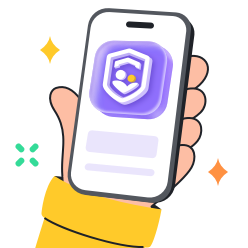The Internet is one of the biggest fun fairs for today’s generation. It is a big place – limitless and often outrageous – yet it is also a place for encounters with people worldwide. Perhaps its most bizarre products include Omegle, a site that connects people for intimacy-level chats with strangers. For many youngsters including the “Omegle teen, “ it’s a place where people want to have fun and, at times, even misbehave.
But while Omegle is that casual chat room that looks like a fun place to hang around, it’s practically the opposite. Aggression, deviants, other obscene content, and even attempts at emotional blackmail hide in the dark.
If you want to know why these youngsters turn to Omegle , what risks they are exposed to, and how their parents, teachers, and even the youngsters themselves can avoid these threats, then this article will provide all the answers. By the end of this piece, you will understand why awareness is important and why fun and safety can’t be favorites.



What is the appeal of Omegle for teen?
The unambiguous slogan that has accompanied Omegle since its inception is “Talk to strangers” . If ever there was a slogan to attract those seeking ways to interact with individuals they do not know, this would be it. In essence, the platform guarantees something interesting—an opportunity to meet a completely different person. To the teens, such randomness provides a little adventure and excitement as well as novel experience and an outlet from the ordinary.
The reasons teens are attracted to Omegle
- Text and Video Chats: Yes, Omegle Teen provides both forms allowing users who like typing to continue doing so while others that enjoy real-life meetings find a way to do so comfortably.
- No Sign-Ups Required: Not even a profile, a bio or a password. Most of the modules allow teens to ask questions in the chat without inputting their personal information.
- Complete Anonymity: It is flexible because the users do not need to reveal their identities, and thus it is easy to try out or open up new channels with strangers.
- Random Pairing: It is completely a stranger to the other for each successive chat. It seems as if you are drawing lots; that is how uncertain and enjoyable it is.
Why are teens hooked?
- Curiosity: Randomness, in general, appeals to adolescents, because adolescence is a stage when individuals experiment. Teens all will not know who is out there and what they shall say.
- Freedom from Judgment: It is safe to talk to a stranger because they won’t embarrass you or force you to go against your will.
- Sense of Adventure: It’s exciting and new to meet someone from a different country or culture all from the safety of one’s own home.
- Easy Escape from Boredom: Regardless if it is an after school break, or a boring weekend afternoon, Omegle becomes the perfect pastime.
Alas, those blind spots are exactly the elements that other platforms may have hooked teenagers on. Let’s explore the dangers.
What are the risks of going on Omegle to teen?
However glossy it may sound, Omegle is nothing near safe. While some users want simple and innocent fun with others, many of them are not so innocent. Because the platform has no moderation, it becomes a hub for all sorts of unsafe and unhealthy practices.
Help your teen have secure chats on Omegle
Concerning privacy and data leakage
- IP Address Tracking: Unlike other platforms, Omegle doesn’t mandate registration but comprises clients’ IP addresses in its database. Consequently, this information can be misused to locate a user.
- Screen Recording Risks: It is very simple for the other person to record a video call without the person’s consent. A simple conversation can be filmed aka mimicked and then used to blackmail the other person.
- Data Exploitation: And if teens do reveal personal details, experienced predators can identify them using those scraps of information.
Unauthorized access
- Omegle Porn: People share obscene content to others mostly out of fun and sometimes targeting young teenage girls.
- Trauma Triggers: Teenagers can see other unpleasant things during such chats, for example, different kinds of aggressive actions or even criminal actions.
- Psychological Damage: It is rather worrying to note that many kids can download, watch or read such things and remain scarred for life.
Potential consequences of communicating with unknown people
- Predators in Disguise: Cybercriminals engage in these acts in most cases pretending to be teens in order to gain the victims’ trust.
- Coercion and Grooming: Some of the nastiest people tend to trick teens into sending intimate pictures or other personal images under the guise of being friends.
- Omegle Teen Porn Crimes: Predators have been known to use the platform to entice minors into sending them sexually explicit material on Omegle’s completely unsupervised platform.
Is Omegle safe?
In a word: no. The vices—privacy invasion, pornography, and sexual harassment/stalking—have a way of making it a very dangerous place for adolescents. It indicates that if supervision and safeguards measures are not installed then teens are open to exploitation.
The impact of Omegle anonymity on teen safety
The main asset of Omegle is anonymity, which, however, is the main reason why the site is dangerous. Although it grants the teenagers their right to self- expression, anonymity empowers predators, bullies, and trolls.
To this end, the following writing describes how anonymity leads to cyberbullying.
- Zero Accountability. If patients are warned that they will not be disciplined, then they proceed to intimidate, bully, or demean others.
- Lasting Emotional Damage. What’s worse is that one mean comment can lead to feelings of doubt, anxiety, or depression. Cyberbullying also occurs on more anonymous sites and is particularly damaging for the victim because they can’t recognize their attackers.
- Viral Harassment. Text or voice messages can saboten other applications and social networks, personal harassment becomes public shame.
This type of predatory behavior is well camouflaged behind the cloak of anonymity that is Omegle.
- Catfishing. Reviews of numerous instances revealed that the predators give a pretense of being fellow teens to engage other younger users in wrong-minded conversations.
- Unfiltered Access. The “Omegle 18+” is supposed to provide only adult content. However, numerous underage citizens also use this section of the site and thus contribute to its toxic content.
- Grooming Tactics. Criminals and other predators learned how to be patient with teenagers and the anonymity ensures that the predator tails the teen and gains his or her trust before the predator gets a chance to manipulate or coerce the teen.
Privacy? Sure, the idea of being anonymous serves to guard not only you but also perverts from law enforcement agencies; that’s why Omegle is filled with such criminals.
How do kids and teens use Omegle?
Today’s youth do not merely engage in talking when on Omegle. They’re pushing it, experimenting with different performances, and occasionally venturing into the dangerous zone. So, if you think Omegle for kids can be a reality, you’re severely mistaken.
Kinds of behaviors experienced by teens using Omegle
- 1. Role-Playing. Some teenagers like to switch between different avatars to feel how people will treat a stranger.
- 2. Dares and Challenges. Friend’s pressure results in either revealing more personal information or engaging in wrong or obscene conversations.
- 3. Seeking Connection. Many teenagers have no friends and decide to spend their free time Talking to strangers through sites like Omegle.
How parents can intervene?
- Have Open Conversations. When talking to the teenagers, do not make them realize that you are disgusted by their online activities. Make an environment where they can open up to you.
- Set Digital Boundaries. It has to be explained well what platforms are not allowed and why.
- Introduce Monitoring Tools. There are kid-friendly apps such as FlashGet Kids that allow the monitoring of the activity in question without necessarily encroaching on the individual’s privacy. This app will ensure that you can keep your child safe from a distance. Moreover, it has all the advanced monitoring and restrictive features you might need to safeguard your child.



It is not about ban, – it is about supporting youth and helping them not get targeted while empowering them to make decent choices.
Other apps like Omegle to look out for
Omegle is not the only random people communication platforms that teenagers actively use. Another factor is that similar applications also contain considerable risks.
Notable Omegle alternatives
1. Chatroulette
As one would expect from a site like this, it randomly pairs people together via video chat; it is like Omegle but with more emphasis on video.
Some users have reported it being filled with explicit material and only a few of them are removed.



2. TinyChat
Primarily deals with group video calls and since there is little or no control, it is not safe for teenagers.



3. Whisper
A completely anonymous site for confessions but mostly abused by sexual perverts and cyberbullies.



4. Monkey
Initially, developed for teenagers, but now most frequently being used by adults who put their peers in risky situations.



Parents should keep an eye on such applications and ensure that their teen knows everything that concerns such applications.
What impact does online sexual harassment have on people?
The impact that unsafe online engagements have, remains even after the chat is off. What many teenagers’ undergo have long-term effects for their emotional and psychological wellbeing.
Mental health consequences
- Anxiety and Depression. Constant stimulation to bullying, pornography or manipulation for instance results in serious health complications.
- Loss of Trust. Most damaging interactions scare teenagers into avoiding real world interactions.
- Shame and Isolation. Quite a number of adolescents suffer feelings of shame and isolation as a result of their online experiences and will avoid friends or family members.
How to support teens?
- Encourage Open Dialogue: Make teenagers understand that they can disclose whatever they have gone through. Put emphasis on the fact that they will not be punished.
- Seek Professional Help: In extreme cases, counseling is very helpful for the teen to help them deal and get over a bad encounter.
Conclusion
While for an average Internet user Omegle might be fun, as a rule, for teenagers, it means likely danger. Like any social media with its millions of people worldwide, there are many disadvantages that can be achieved: violation of the right to privacy, the possibility of using prohibited vulgar language and making statements that are insulting and defamatory, as well as the complete absence of anonymity.
It is the time to interfere as parents and guardians, sit down with the teens and explain to them the dangers involved, Install the tracking tools and also give them some guidelines without being prejudiced. The teens themselves also need to be responsible—for their own safety—of the risks and consequences involved and maintain accountability for their internet actions.
The Internet does not have to be the scary place that people make it out to be. Awareness, communication, and tools all lead us to being able to make online spaces safer for each and every Omegle teen. So, make sure to pair up these social platforms with parental control tools like FlashGet Kids. Hopefully, that will take some stress away from protecting your child in the digital world.

